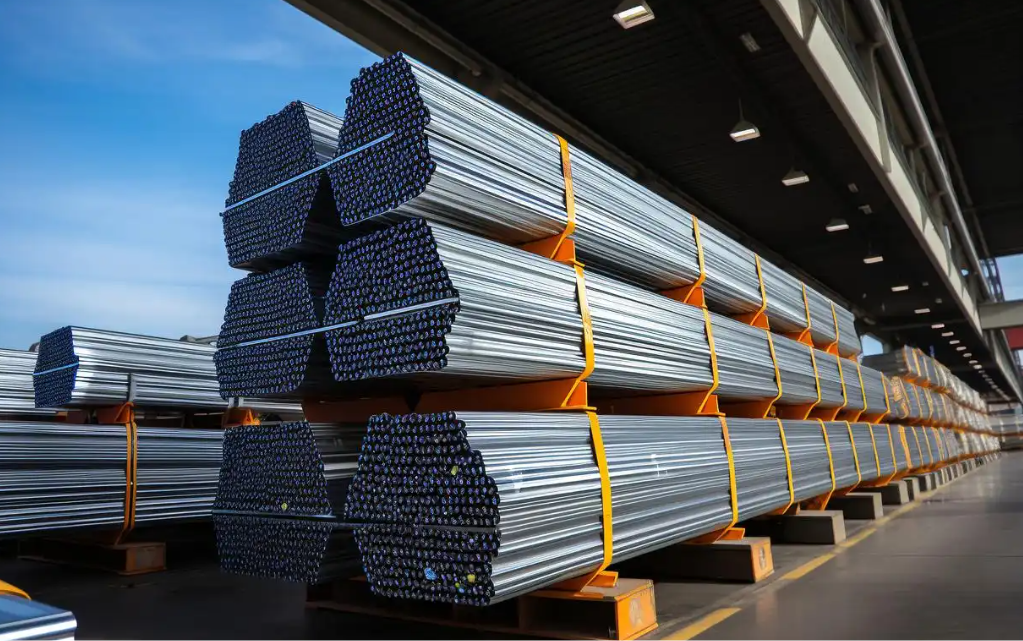
Since 2024, the steel export situation has become increasingly challenging. With major export destinations such as Vietnam and South Korea successively launching anti-dumping investigations against China’s hot-rolled coils, the domestic steel industry seems to be under “dark clouds,” and market confidence has plummeted. However, the author believes that the impact of anti-dumping policies on steel exports should be assessed prudently and not judged solely based on policy barriers.
China’s rapid growth in steel exports has significantly squeezed some regional steel markets. According to customs data, China’s steel exports in 2023 and 2024 were 90.26 million tons and 110.72 million tons, respectively, representing year-on-year increases of 22.8 million tons and 20.46 million tons, or growth rates of 36.2% and 22.7%. This marks two consecutive years of rapid growth. During the same period, overseas crude steel production increased by 1.11 million tons and decreased by 140,000 tons, respectively, far below the growth in China’s steel exports. This indicates that the surge in exports has put pressure on foreign steel markets. Taking Vietnam as an example, China’s steel exports to Vietnam in 2022 were only 5.46 million tons but surged to 12.77 million tons in 2024—2.3 times the 2022 figure. The ratio of China’s steel exports to Vietnam’s crude steel production rose from 27.3% to 57.8%. Regardless of how much steel is re-exported from Vietnam, the influx of large quantities of low-cost steel inevitably disrupts Vietnam’s steel market, making anti-dumping policies an inevitable response.
The impact of policy barriers on steel exports must be carefully evaluated in terms of the following factors:
- Policy Intentions and Expected Outcomes
Anti-dumping policies generally aim for one of three objectives:- (1) Slowing the rapid growth of China’s steel exports from high-speed to low-speed growth;
- (2) Stabilizing exports with little to no growth;
- (3) Gradually reducing exports to a “reasonable” level.
Historically, when China’s steel exports remained between 60-80 million tons per year, trade frictions were minimal. However, as exports reached 90 million tons, trade disputes began to rise, and when they exceeded 100 million tons, conflicts intensified. Given China’s comprehensive and competitive steel industry—offering a wide range of products at low prices—exports are unlikely to decline sharply. The policy’s bottom line is likely to prevent further rapid growth, with an optimal target of reducing exports to around 90 million tons.
- Case Studies of Steel Trade Frictions
The U.S. serves as a notable example, having long practiced steel protectionism. In 2002, it initiated a Section 201 investigation on steel imports, followed by a Section 232 probe in 2017. In 2018, it imposed a 25% tariff on steel, and since 2025, it has raised tariffs multiple times. Despite these high barriers, U.S. steel imports remain substantial, peaking at 34 million tons and bottoming at 25 million tons. This suggests that while tariffs affect trade, they do not eliminate imports entirely. - Chinese Steelmakers’ Countermeasures
Chinese steel companies have multiple strategies to mitigate anti-dumping pressures:- Product Diversification: Since anti-dumping measures primarily target hot-rolled coils (the most exported product), manufacturers can shift production to other steel varieties.
- Market Diversification: Reducing reliance on markets like Vietnam and South Korea while exploring new export destinations.
- Cost Optimization: By cutting raw material, technological, and management costs, Chinese firms can maintain some price competitiveness even under anti-dumping duties.
- Persistent Oversupply & Export Necessity
As the global hub of steel production and consumption, China has seen its domestic steel demand decline for four consecutive years since 2021. With chronic oversupply and companies prioritizing scale and market share, exports remain a critical pressure valve. In 2025, with real estate still sluggish, domestic demand is unlikely to recover, sustaining the oversupply issue. Many steelmakers have already prioritized exports this year, and as long as they avoid cash losses, their export drive will remain strong.
In conclusion, while the steel export environment is undeniably tough—with growing global resistance—excessive pessimism is unwarranted. China’s steel industry remains highly competitive, and companies are adaptable. Ultimately, the market will balance export volumes and profitability. Previously, exports may have yielded slim profits, but anti-dumping measures will raise costs and squeeze margins further. Barring administrative production restrictions, we expect China’s steel exports to remain above 100 million tons in 2025.